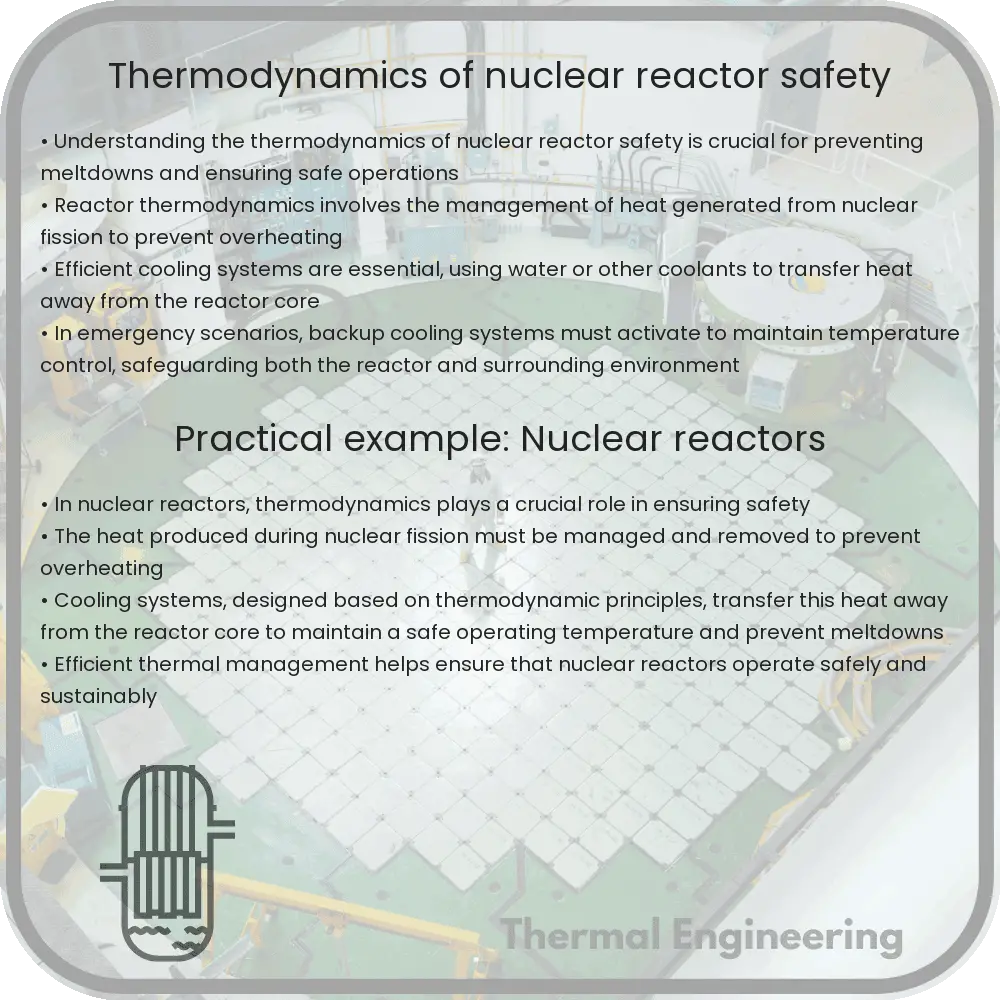Learn about nuclear reactor thermodynamics, focusing on heat generation, transfer, and conversion processes essential for reactor safety and efficiency.

The Basics of Nuclear Reactor Thermodynamics and Safety
Understanding the thermodynamics of nuclear reactors is crucial for ensuring their safety and efficiency. Nuclear reactors generate energy through fission, the process by which atomic nuclei split into smaller parts, releasing a significant amount of heat. This heat is then used to produce steam, which drives turbines to generate electricity. The principles of thermodynamics help engineers manage this heat production and maintain reactor stability.
Key Thermodynamic Processes in a Nuclear Reactor
In a nuclear reactor, the key thermodynamic processes include heat generation, heat transfer, and heat conversion. Each of these plays a vital role in reactor operation:
- Heat Generation: Fission reactions in the reactor core generate heat. The rate of heat generation is crucial and must be controlled to prevent overheating. This rate is managed by control rods, which absorb neutrons and slow the fission reaction.
- Heat Transfer: The generated heat is transferred from the reactor core to the coolant – usually water, which might be under high pressure. The efficiency of heat transfer affects the overall efficiency of the reactor and its safety.
- Heat Conversion: The heat transferred to the coolant is turned into steam in the steam generator. The steam pressure drives turbines which then power electric generators.
Thermodynamics of Reactor Safety
Safety in nuclear reactors hinges on the effective management of thermal energy and the materials involved in the heat exchange. Several thermodynamic principles come into play:
- First Law of Thermodynamics (Conservation of Energy): This law states that energy can neither be created nor destroyed, only transformed from one form to another. In the context of a nuclear reactor, all the heat produced in the core must be accounted for, either used for power generation or systematically removed via cooling mechanisms to prevent overheating.
- Second Law of Thermodynamics (Entropy): The second law introduces the concept of entropy, a measure of energy dispersal in a system. In nuclear reactor management, it reminds engineers that heat will naturally flow from hotter to cooler parts, and entropy will increase over time. Efficient heat exchangers and cooling systems are designed to control this flow and manage entropy effectively.
- Temperature and Pressure Control: Maintaining optimal temperatures and pressures is essential for reactor safety. Excessive heat can lead to mechanical failures or, in worst cases, melting of the reactor core (a meltdown). Similarly, pressure must be controlled to prevent explosions or leaks.
Conclusion
The thermodynamics of nuclear reactors encompasses various processes that must be rigorously managed to ensure safe and efficient operation. Engineers employ the principles of thermodynamics to monitor and control heat generation, transfer, and conversion, while also ensuring the integrity of the reactor’s structural components. Understanding these principles is essential for anyone involved in the design, operation, or regulation of nuclear reactors.
As nuclear technology continues to evolve, the role of thermodynamics in reactor safety remains a crucial area of research and innovation, ensuring that these powerful energy sources are both productive and safe.